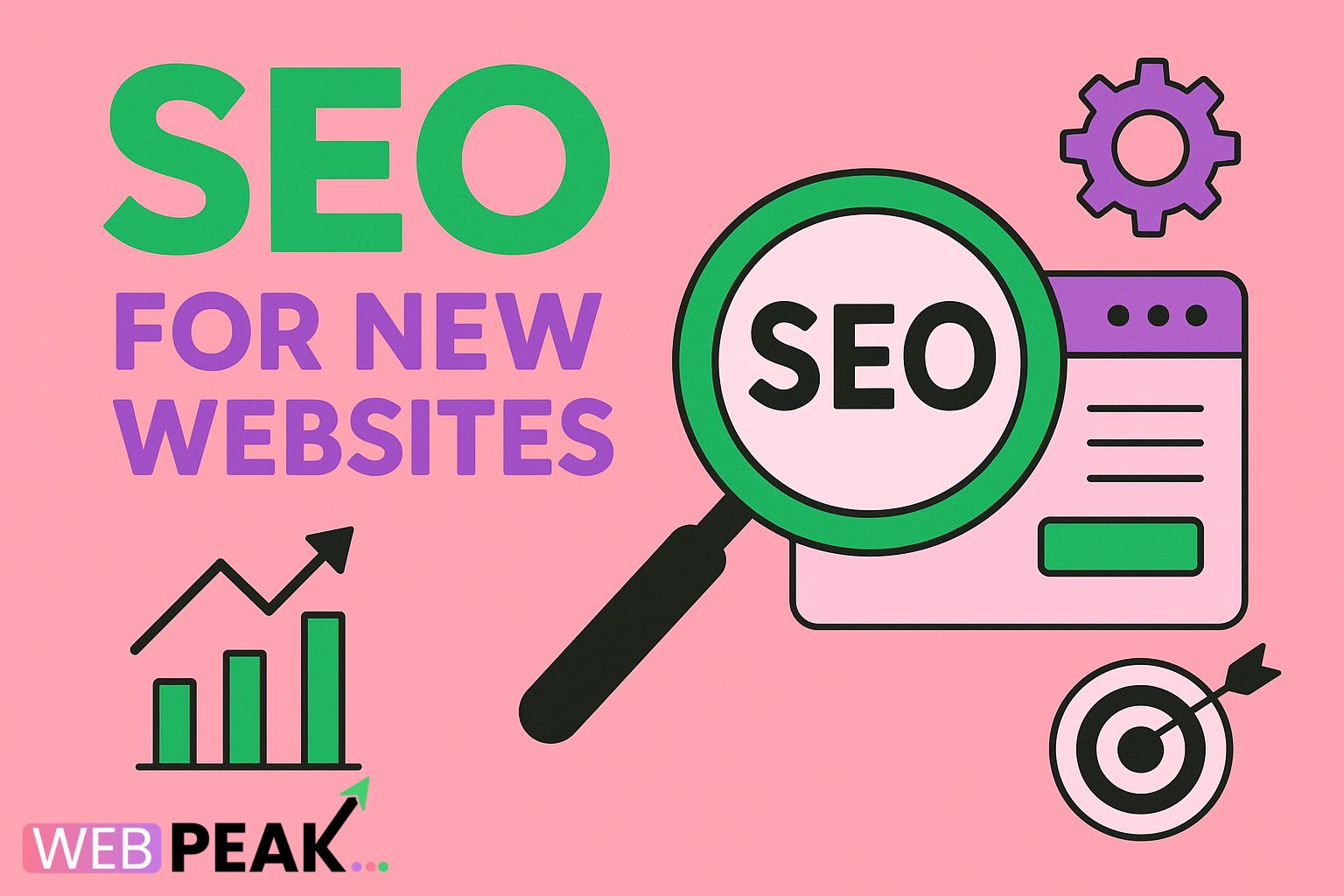SEO for New Websites: Step-by-Step Guide to Rank Fast in 2025
Launching a new website in 2025 is both exciting and challenging. With millions of new websites going live every year, competition for visibility in search engines like Google is tougher than ever. Search Engine Optimization (SEO) is the cornerstone of online success, and when done right, it can help a new website gain traction quickly, attract relevant traffic, and build authority in its niche. This guide will walk you step-by-step through the process of ranking a new website effectively in 2025.
1. Understand the Foundations of SEO in 2025
SEO has evolved beyond simple keyword optimization. In 2025, search engines prioritize user experience, content quality, mobile performance, and topical authority. Google’s algorithm updates continue to focus on providing users with the most relevant, high-quality information. This means that for a new website to rank fast, it must be built on a strong foundation:
- Mobile-first design: Ensure your site is responsive and optimized for all devices.
- Core Web Vitals: Improve page speed, interactivity, and visual stability.
- Secure browsing: Always use HTTPS to build trust and protect visitors.
2. Perform Thorough Keyword Research
Keyword research is still the heart of SEO, but in 2025 it’s more about search intent than keyword stuffing. Use tools like Google Keyword Planner, Ahrefs, or SEMrush to identify opportunities. Focus on:
- Long-tail keywords: Phrases that are highly specific and easier to rank for.
- Semantic search: Related keywords and phrases that show topical authority.
- Local keywords: Essential for businesses targeting a geographic location.
When selecting keywords, look for a balance of high intent and low competition. These are easier for new websites to rank for while still bringing in qualified traffic.
3. Build a Solid Website Architecture
The way your website is structured affects how easily search engines can crawl and index it. Create a clean, logical architecture that supports both users and bots. For a new site:
- Organize pages in a hierarchy (Home > Category > Subcategory > Post).
- Use SEO-friendly URLs with keywords where relevant.
- Make navigation simple, ensuring users can find information in 2-3 clicks.
This helps both Google and visitors understand your site better, improving ranking potential and user engagement.
4. Create High-Quality, Optimized Content
Content remains king in 2025, but the expectations are higher. For new websites, publishing valuable and optimized content is the fastest way to attract organic traffic. Focus on:
- In-depth blog posts: Cover topics comprehensively, answering user questions thoroughly.
- On-page optimization: Use keywords in titles, headings, meta descriptions, and body text naturally.
- Multimedia: Add images, infographics, or videos to boost engagement.
- Regular updates: Refresh content to remain accurate and up-to-date.
Google rewards sites that establish topical authority. This means consistently producing content around your niche to demonstrate expertise and reliability.
5. Optimize Technical SEO
Technical SEO ensures your website can be crawled and indexed without issues. For a new site, technical optimization is crucial from the start. Key areas to address include:
- XML Sitemap: Submit your sitemap to Google Search Console.
- Robots.txt: Make sure search engines can crawl important pages.
- Site Speed: Compress images, use caching, and invest in good hosting.
- Schema Markup: Add structured data to enhance visibility in rich snippets.
6. Leverage Internal and External Linking
Links remain a strong ranking factor. Internal linking helps spread authority across your website and keeps users engaged. For external links, aim to earn backlinks from high-authority sources. Strategies include:
- Guest posting on reputable sites.
- Building relationships with influencers and bloggers.
- Creating share-worthy resources like guides or tools.
Always focus on quality over quantity when it comes to backlinks. A handful of high-authority links can have more impact than dozens of low-quality ones.
7. Focus on Local SEO (If Applicable)
If your business serves a local audience, local SEO is essential for ranking fast. Steps include:
- Setting up and optimizing your Google Business Profile.
- Encouraging customer reviews and responding promptly.
- Using location-based keywords in your content.
- Building citations on local directories and maps.
Local SEO helps new websites capture nearby customers quickly and effectively.
8. Monitor, Measure, and Adjust
SEO is not a one-time effort. Continuously monitor your performance using tools like Google Analytics, Google Search Console, and third-party platforms. Track metrics such as:
- Organic traffic growth.
- Keyword rankings.
- Bounce rate and dwell time.
- Backlink profile strength.
Based on insights, adjust your strategy to focus on what works and fix what doesn’t.
9. Consider Professional Help for Faster Results
While it’s possible to implement SEO on your own, hiring experts can significantly accelerate your results. A professional agency understands the latest algorithm updates, advanced strategies, and how to avoid costly mistakes. If you’re launching a new website, consider working with WEBPEAK, a full-service digital marketing company that offers Web Development, Digital Marketing, and SEO services. Their expertise can help your site not only rank faster but also grow sustainably in the competitive digital landscape.
Conclusion
Ranking a new website in 2025 is challenging but entirely achievable with the right SEO strategy. By focusing on user experience, publishing high-quality content, optimizing technical SEO, and building strong links, your site can establish authority and attract organic traffic quickly. Remember, SEO is a marathon, not a sprint, but with persistence and the right guidance, your new website can rise in the rankings faster than you think.





